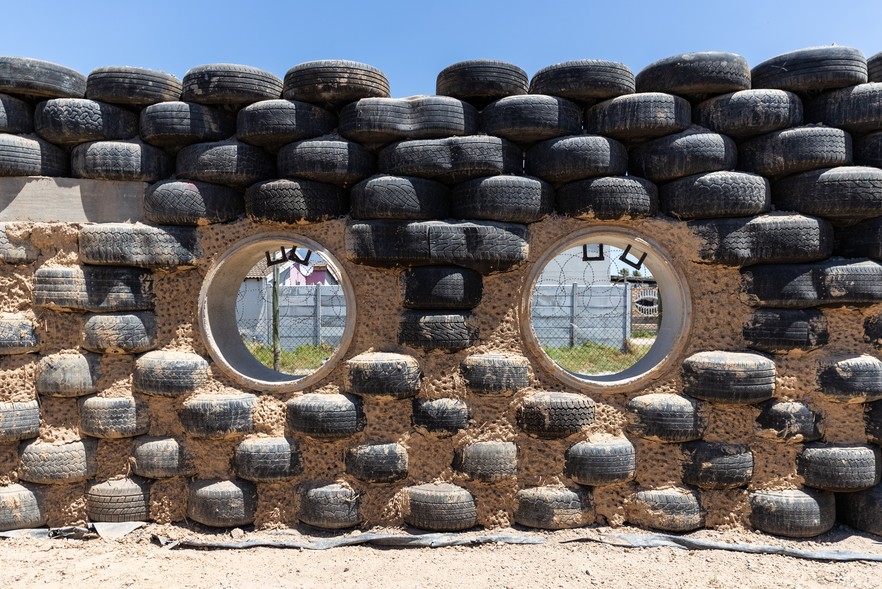
3 February 2025
Goal50 is an ECD centre currently being built out of tyres in Heideveld.
Used tyres, bottles, mud, eco bricks and other recycled waste – these are some of the building materials being used to construct a new Early Childhood Development (ECD) Centre in Heideveld.
Named Goal50, the 750m2 centre, will have four classrooms, two outdoor play areas, and serve 100 children and ten staff.
The ECD centre falls under the umbrella of Great Commission United (GCU), a youth development organisation in Heideveld. The building was designed and is being built by the Natural Building Collective. The money for the project was raised by Uthando (love) South Africa.
Uthando, a non-profit organisation founded in 2008, has raised money for six ECD centres in areas such as Philippi, Mfuleni and Delft.
Workers are employed from the Heideveld community and trained to build with recycled materials.
“These buildings are so unique, so beautiful and so artistic,” said James Fernie, founder of Uthando. “It’s much much more than recycling. These buildings are aspirational. They give people hope.”
Goal50 is the second ECD built with tyres. The first was the Ulwazi Educare in Delft, built in 2022. Goal50 is close to the N2 highway, and Fernie hopes that the visibility will make it easier to raise funds . “Every single person driving into Cape Town will see this building.”
The centre is expected to open in mid 2025 and will be free to use. It is named after the charity Goal50, a sister organisation to the GCU that serves communities in the Cape Flats.
5,000 tyres are expected to be used in the project.
Ruan Grobler, operational manager at the Natural Building Collective, said that although they are using waste materials, they are building up to a very high standard that is “designed by architects and signed off by engineers”.
The first phase of the project will cost over R5-million to complete and will use 1,400 tyres. This includes a boundary wall. The entire project will use 5,000 tyres. Grobler says that although the building materials are cheaper than conventional building, the work is much more labour-intensive. For the construction of the building, workers from Heideveld have been trained how to use recycled materials.
“When we leave here, we leave them with skills that nobody else has in South Africa,” says Grobler.
The tyres come from the municipal waste bureau in Atlantis. The tyres are free, but the transport has to be paid for. For the most part, the tyres must all be the same width. During construction the tyres are filled with crushed building rubble, making them sturdy and heavy. “There’s no moving it afterwards”, says Grobler.
Cob – a mixture of sand, clay and straw – is used in the building process.
For the outer layer, a mixture of sand, clay and straw, called cob, is used. This is mixed in a traditional way – stamping it with one’s feet.
“It’s like a dance,” says Grobler.
Behind the cob, eco bricks – bottles tightly packed with plastic – are used to fill in gaps between tyres.
Once the layers of cob are complete, a final layer of cement is added for waterproofing. Then the wall is painted.
James Fernie, founder of Uthando, and Ruan Grobler, operational manager at the Natural Building Collective. The school is expected to open in mid 2025.
The windows are made from storm water manholes. Grobler says they plan to put pillows in these windows in which the children can sit.
Almost everything used for the building has been used before, he says.
The idea of the tyres is inspired by American architect Michael E. Reynolds, also known as ‘the garbage warrior’.
Working with these materials is challenging, Grobler says, as every building is different. “There’s no building code in South Africa that shows you how to build with tyres.”
Using similar methods, Uthando and the Natural Building Collective have also built a five-a-side soccer pitch out of tyres at Woodlands primary school in Heideveld.